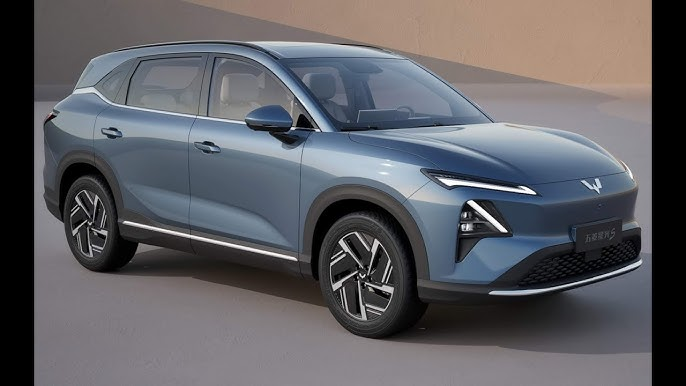In a world where sustainability is no longer just a buzzword but a necessity, the automotive industry is steering towards a greener future. As of 2024, electric vehicles (EVs) and hybrids are making significant strides, reshaping how we think about transportation. According to a recent Bloomberg Green report, global EV sales are projected to surpass 20 million units by the end of the year, a testament to their growing popularity. This article explores the latest innovations in EVs and hybrids, helping you understand the transformative impact these vehicles have on our roads and our lives.
The Rise of Electric Vehicles in 2024
Electric vehicles have seen unprecedented growth, driven by advancements in battery technology and charging infrastructure. Here’s how EVs are leading the charge:
Battery Innovations Powering EVs
- Solid-State Batteries: 2024 marks a pivotal year with companies like Toyota and QuantumScape pushing solid-state batteries to the forefront. These batteries offer higher energy density, faster charging times, and increased safety—key factors contributing to the growing appeal of EVs.
- Battery Recycling: Brands like Tesla and Rivian are investing in battery recycling technology, enhancing sustainability by reducing reliance on raw materials.
Charging Infrastructure Expansion
- Rapid Charging Networks: Tesla’s Supercharger network and Volkswagen’s Electrify America have expanded significantly, with over 50,000 fast-charging stations worldwide, according to Electrek. This expansion is crucial for alleviating range anxiety.
- Home Charging Solutions: Companies like ChargePoint are offering home charging stations that integrate with smart home systems, providing convenient and cost-effective solutions for EV owners.
Hybrids: The Bridge to a Greener Future
While EVs dominate the headlines, hybrids remain a popular choice for those seeking a balance between performance and eco-friendliness. Here’s why hybrids are still relevant in 2024:
Fuel Efficiency and Performance
- Plug-in Hybrids (PHEVs): Models like the Hyundai Ioniq and Ford Escape PHEV offer an electric range of up to 40 miles, perfect for daily commutes while retaining the flexibility of a gasoline engine for longer trips.
- Regenerative Braking: This technology, now more efficient than ever, helps recharge the battery while driving, reducing emissions and improving fuel economy.
Cost and Availability
- Affordability: Hybrids often come with a lower price tag than full EVs, making them an attractive option for budget-conscious consumers.
- Widespread Availability: With brands like Toyota and Honda leading the charge, hybrids are readily available across the globe, ensuring that consumers have ample choices.
Comparing EVs and Hybrids: What to Consider
When choosing between an EV and a hybrid, several factors come into play. Here’s a practical guide to help you decide:
Environmental Impact
- EVs: Zero tailpipe emissions make EVs the greenest choice for the environmentally conscious driver.
- Hybrids: While not entirely emissions-free, hybrids significantly reduce carbon footprint compared to traditional gas cars.
Total Cost of Ownership
- Upfront Costs: EVs generally have higher initial costs, but government incentives and tax credits can offset these expenses.
- Maintenance: EVs have fewer moving parts, leading to lower maintenance costs over time. Hybrids, while more complex than traditional cars, also offer savings compared to gas vehicles.
Driving Needs and Lifestyle
- Long-Distance Travel: Hybrids provide flexibility with their dual power sources, making them ideal for road trips.
- Daily Commuting: EVs are perfect for urban driving with plenty of charging options and low running costs.
Practical Tips for Prospective Buyers
If you’re in the market for a new vehicle, consider these tips:
- Test Drive Both Options: Experience the driving dynamics and features of both EVs and hybrids to find the best fit for your lifestyle.
- Research Incentives: Check for government incentives and rebates that can make your purchase more affordable.
- Evaluate Charging Needs: Consider your access to charging infrastructure, particularly if you’re leaning towards an EV.
Conclusion: The Road Ahead
As we venture into a new era of automotive innovation, both electric vehicles and hybrids offer compelling benefits that cater to different needs and preferences. Whether you’re drawn to the cutting-edge technology of EVs or the balanced efficiency of hybrids, 2024 presents a wealth of options that make going green more accessible than ever.
Are you ready to make the switch? Join the conversation and share your thoughts on the future of sustainable transportation in the comments below. As technology continues to evolve, one thing is clear: the journey to a more sustainable future is well underway, and the roads we travel are changing for the better. Keep an eye on emerging trends like autonomous driving and vehicle-to-grid technology, which promise to redefine our driving experience even further.

